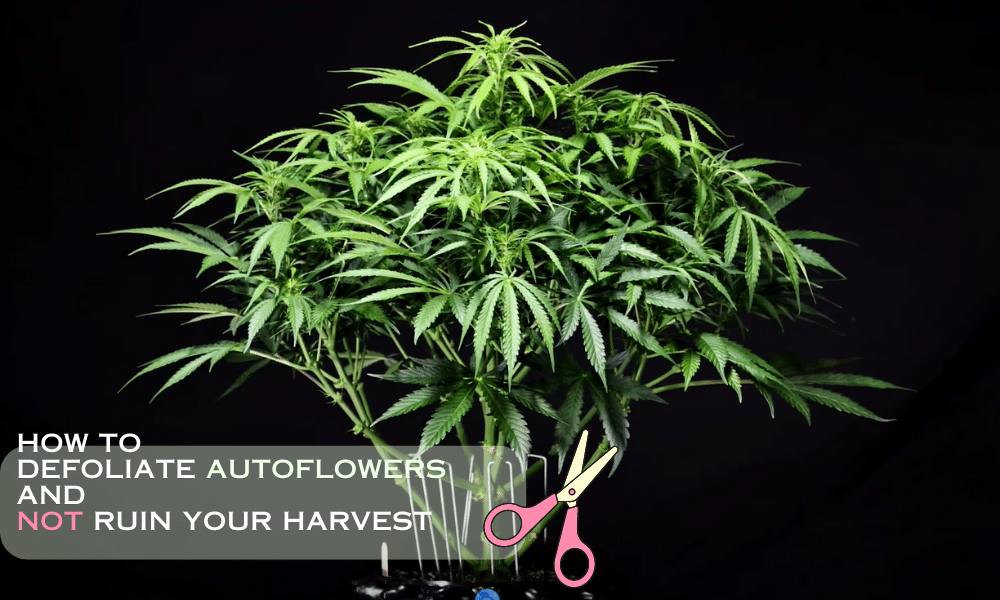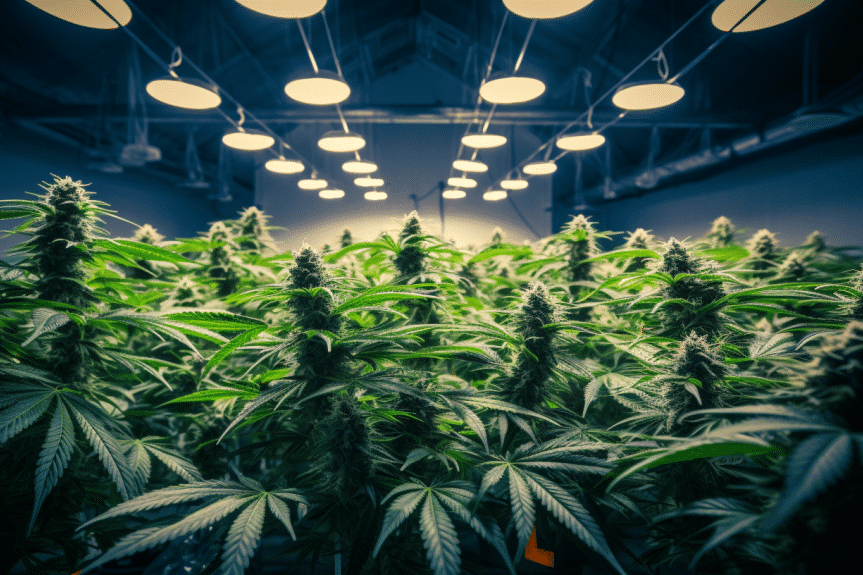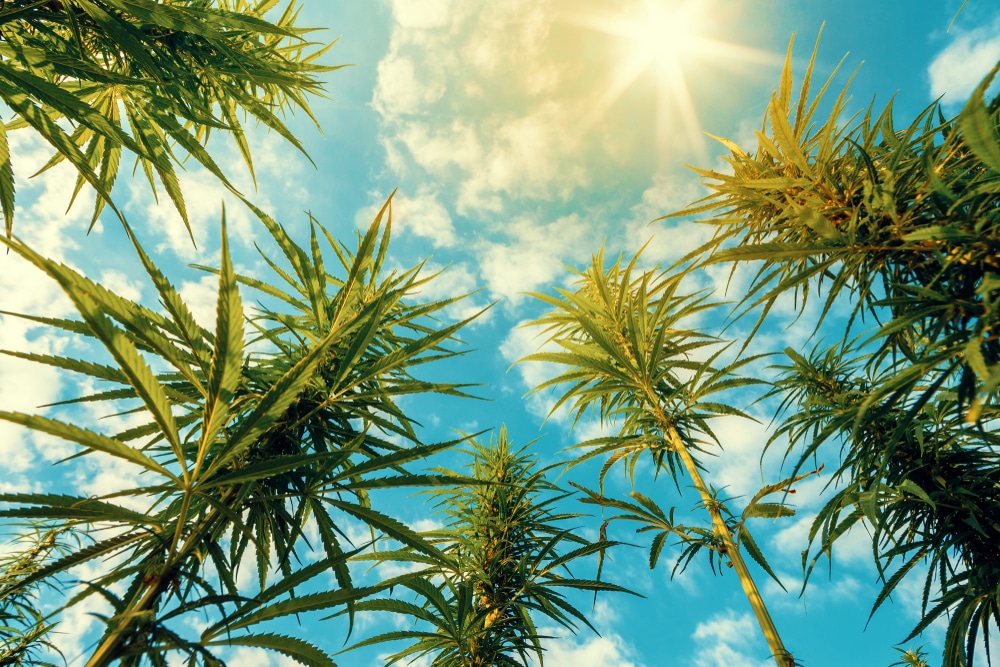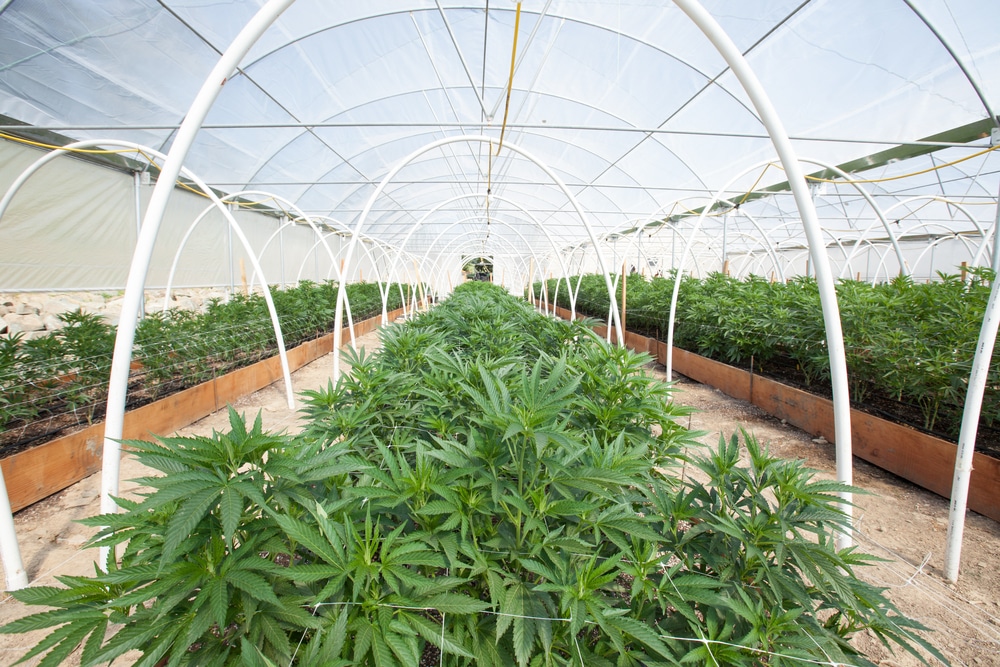No products in the cart.
Marijuana Education
How To Defoliate Autoflowers And Not Ruin Your Harvest
Defoliating autoflowers is a solid way to get bigger buds from cannabis autoflowers when done the right way.
Defoliating autoflowers seems counterproductive because it involves trimming, which can be stressful, and autoflowers are stress-sensitive cultivars. But defoliating autoflowers can be very helpful for getting bigger yields for autoflowers. You can defoliate autoflowers without ruining your prospects of getting a great autoflower harvest.
So how do you defoliate autoflowers to get the rewards without stressing them excessively? This Seed Fair article discusses all you need to know about defoliating autoflowers; techniques and the best time to defoliate autoflowers.
WHAT IS CANNABIS DEFOLIATION?
The entire purpose of cannabis defoliation is to strategically select and take out fan leaves that are limiting your chances of getting more and bigger buds. Fan leaves, such as those blocking light from reaching lower parts of your plant and those already yellowing and wilting.
Cannabis defoliation is good and very often necessary, even with growing Autoflowering cannabis seeds; but do not forget its risks. You can ruin your plant’s potential of developing big yields if you do not exercise proper caution.
When defoliating autoflowers, you must know how many fan leaves to take out and what fan leaves you need to take out. You also need to know when to defoliate autoflowers to ensure your plant has a better chance of withstanding the stress that comes with it.
IS DEFOLIATION SAFE FOR AUTOFLOWERS?
Yes, defoliation can be safe for autoflowers. You just need to know when to defoliate them and how to defoliate them. You want to avoid defoliating autoflowers just for the sake of it. Only defoliate autoflowers when it seems they need it.
Some benefits of defoliating autoflowers include:
BENEFITS OF DEFOLIATING AUTOFLOWERS
- Helps to maximize the autoflower’s energy: Autoflowers have a short growth cycle. So they need to make the most of their energy to increase average autoflower yields. Defoliating autoflowers helps to take out fan leaves that do not benefit your autoflower’s development; fan leaves that are blocking bud sites or the yellow and wilted ones wasting your plant’s energy.
- Controls humidity risks: An overly dense foliage increases humidity risks by limiting proper air circulation and light penetration. Defoliating autoflowers takes out unnecessary foliage to enable proper resource circulation; thus, controlling humidity risks.
- Maximizes light supply: Defoliating autoflowers helps to improve adequate light penetration to bud sites that might have been otherwise blocked by large fan leaves.
- Prevents pests and disease infestations and makes it easier to manage your plant: An excessively dense foliage makes it difficult to properly manage your plant and makes the ideal host for pests and diseases. Controlling your autoflower’s foliage through defoliation makes it easier to properly manage your plants and spot yield-threatening infestations.
RISKS OF DEFOLIATING AUTOFLOWERS
- You might reduce your autoflower yields: Defoliating autoflowers the wrong way or failing to monitor your autoflower week by week before defoliating will cause you to trim at a time they shouldn’t spend recovering from stress but instead increasing their yields; a time like flowering.
- Your autoflower may suffer sunburn or light burn: The sudden decrease in foliage from defoliating autoflowers too quickly or at a sensitive period could expose them to sun or light burn.
- Your autoflower becomes exposed to more pests and diseases: Defoliating autoflowers, especially without proper post-defoliation care, risks the new cuts getting infected or infested by pests.
- Your autoflower becomes weaker: Defoliating autoflowers weakens them a little due to their fewer foliage. But if you defoliate autoflowers at the right time, they quickly and easily regain their strength.
- You might trigger a nutrient lockout: Defoliating autoflowers too quickly or removing too many fan leaves from your autoflowers can trigger a nutrient burn or lockout because there are fewer leaves to use the resources.
WHAT ABOUT OUTDOOR AUTOFLOWER GROW?
If you are growing autoflowers outdoors, avoid defoliating them. Outdoor growing comes with a ton of stress and uncertainties; making it relatively unsuitable for post-defoliation care.
However, if you absolutely feel you must defoliate because your lower and middle bud sites are not getting enough resources, try low-stress training for autoflowers instead.
WHEN TO DEFOLIATE AUTOFLOWERS?
Defoliating autoflowers is best done when you are more confident in your skills due to the sensitive nature of autoflowers. Until then, use suitable LST techniques for autoflowers or the leaf tuck technique.
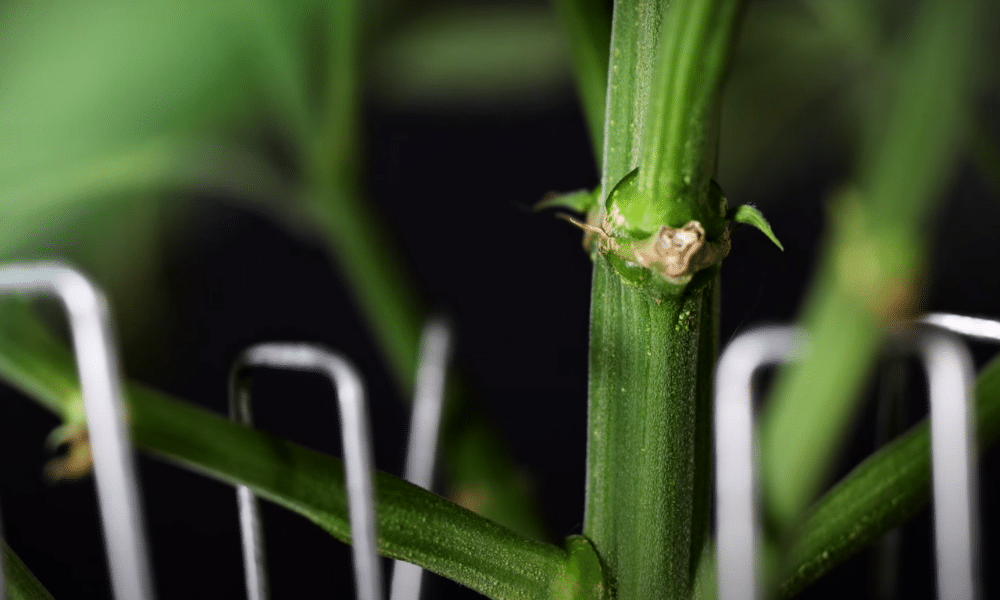
If you are defoliating autoflowers, do so when they are still focused on vigorous vegetative development and do not defoliate autoflowers more than twice. This makes the late vegetative phase the best times to defoliate autoflowers.
Avoid defoliating autoflowers during flowering or at the time to harvest autoflower. At both stages, your autoflowers should pay more attention to increasing its bud size and not recovery. Defoliating autoflowers at these stages will redirect its focus from increasing its buds to recovery, leading to smaller yields.
If there is an absolute need to defoliate autoflowers at the flowering stage, try a suitable LST technique for autoflowers or the leaf-tuck technique (described below).
THE LEAF TUCK TECHNIQUE
The leaf tuck technique is an awesome alternative to defoliating autoflowers. In the leaf tuck technique, you increase resource penetration by tucking your fan leaves under branches instead of trimming. It is less stressful and is almost like the LST tie-down method.
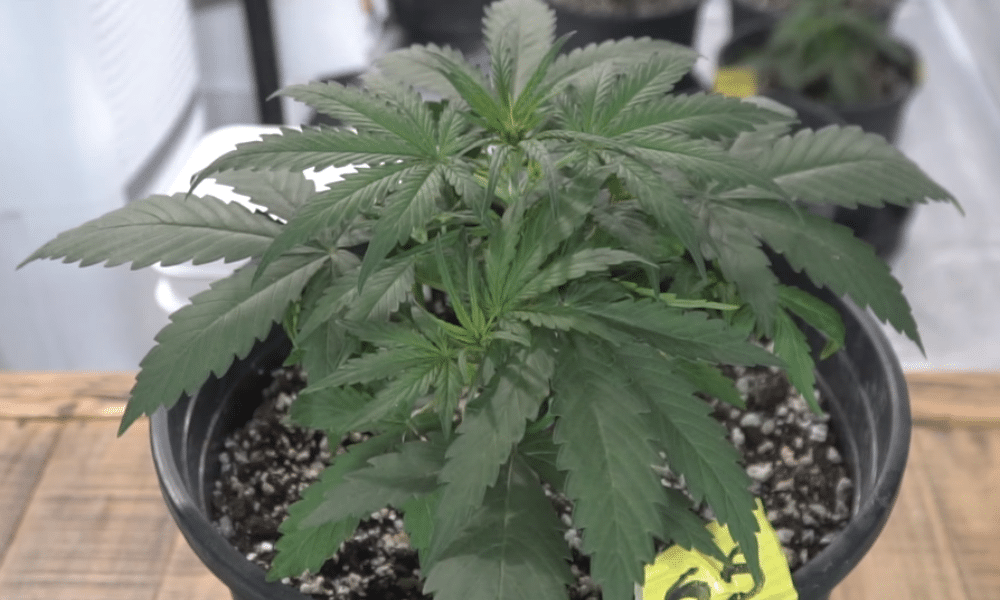
Here’s how to do a leaf tuck on autoflowers:
- Select the fan leaves: Choose the fan leaves closest to the bud sites and those blocking resources from reaching lower parts of your plant.
- Gently tuck them in: Carefully pick up the target fan leaves and place them beneath the branches closest to them to expose their bud sites.
- Redo and repeat: As your autoflower keeps growing, you might have to do this a few more times.
HOW TO DEFOLIATE AUTOFLOWERING CANNABIS
Despite how difficult defoliating Autoflowering cannabis seems, defoliating autoflowers takes just 5 easy steps.
Step 1: Ensure your tools are sterile
Before defoliating autoflowers, make sure your tools—shears, gloves, and all are available, sterile, and ready to use.
Step 2: Confirm your autoflower needs defoliation
Do not defoliate autoflowers for the sake of it. Only defoliate autoflowers if they have excessive foliage that might be impairing the desired development.
Step 3: Trim the big fan leaves
To avoid over-defoliating autoflowers, start with the big fan leaves covering the bud sites in the middle and bottom regions.
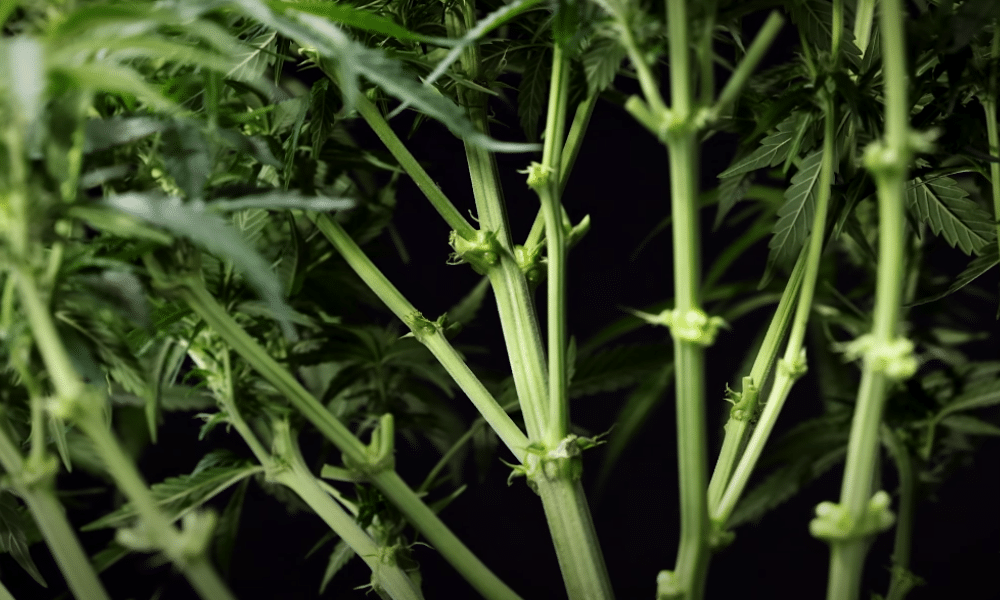
Step 4: Trim off the big leaves close to the buds
The next set of leaves you should remove when defoliating autoflowers are those growing close to the buds, especially those directly at the flower (bud) sites.
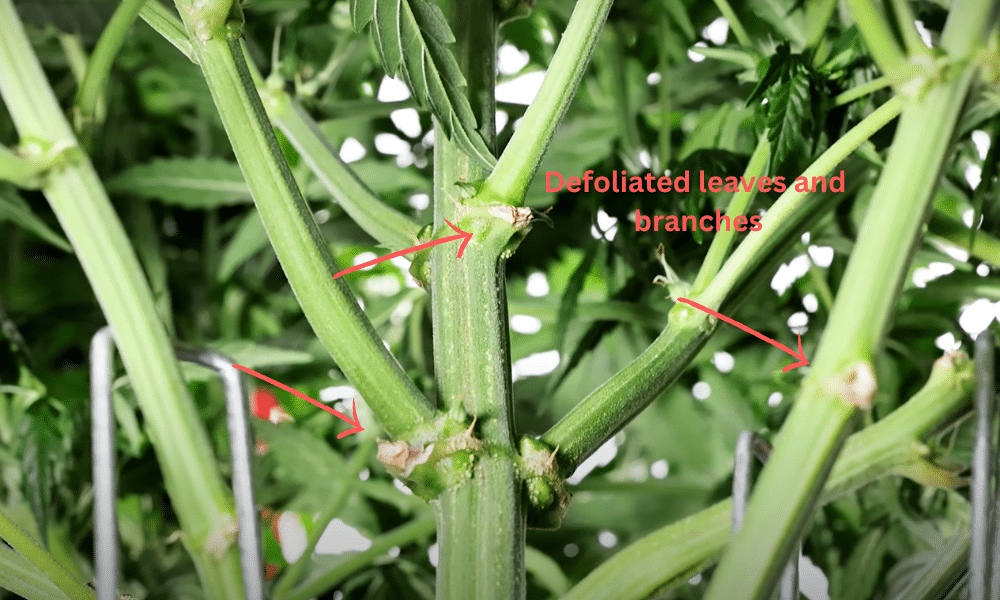
Step 5: Trim off the yellow, wilting leaves
Your autoflower needs all the energy it can gather to develop big buds. So when defoliating autoflowers, also remove yellowed, wilted leaves that might be wasting your plant’s energy. Start from the yellow leaves at the bottom of your autoflower and work your way to the top, to the third node.
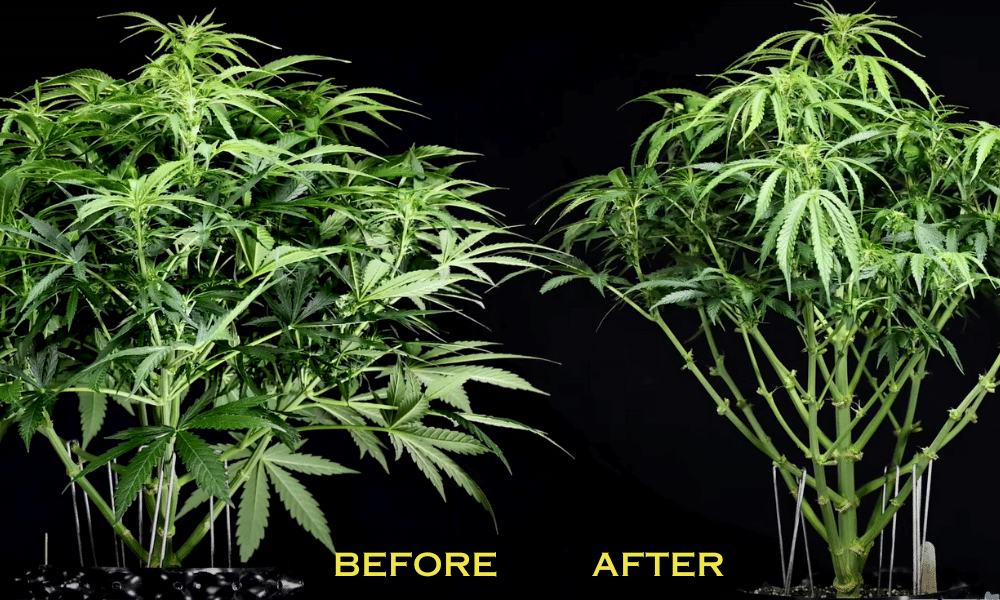
Please note: If you have more yellow leaves than healthy green leaves, do not defoliate your autoflower. A significant amount of yellow leaves might be a sign of nutrient deficiency or something else.
WHAT TO DO AFTER DEFOLIATION?
After defoliation, your autoflower needs a lot of TLC (tender loving care) to help it recover properly. So here are a few necessary things to do after defoliation:
- Monitor and Observe: Watch out for extreme stress signs, such as wilting or discoloration.
- Nurture appropriately: After defoliating autoflowers, reduce and readjust growth inputs to suit your plant’s needs.
- Protect from excessive sunlight: As much as defoliating autoflowers helps, the transition from having much foliage to having reduced foliage can cause light burn and negatively affect your yields.
- Watch out for pests and diseases: Your autoflowers are in a vulnerable state and prone to infections due to their freshly trimmed parts. Monitor and care for your defoliated autoflowers to address pests and diseases promptly.
- Be patient: After defoliating autoflowers, patience plays a huge role in your autoflowers recovering properly.
HOW MANY LEAVES TO REMOVE DURING DEFOLIATION AND HOW OFTEN TO DO IT?
Only defoliate autoflowers when it looks like they need it. You do not want to overdefoliate your autoflowers or you’d risk suppressing their development.
When defoliating autoflowers, most growers advise removing no more than 20% of its entire foliage or removing 1 to 3 fan leaves first and waiting about 4 to 5 days to see how your plant responds.
Do not defoliate autoflowers more than twice to maximize their short growth cycle.
LOLLIPOPPING VS. DEFOLIATION
Lollipopping and Defoliation are both pruning techniques and both involve a level of stress. But lollipopping is a lot more stressful than defoliation because it requires you taking out the entire bottom foliage to get that lollipop look.
As a result, while lollipopping encourages just upper bud/canopy development, defoliation encourages all-round bud development. Thus, defoliation is more suitable for autoflowers than lollipopping.
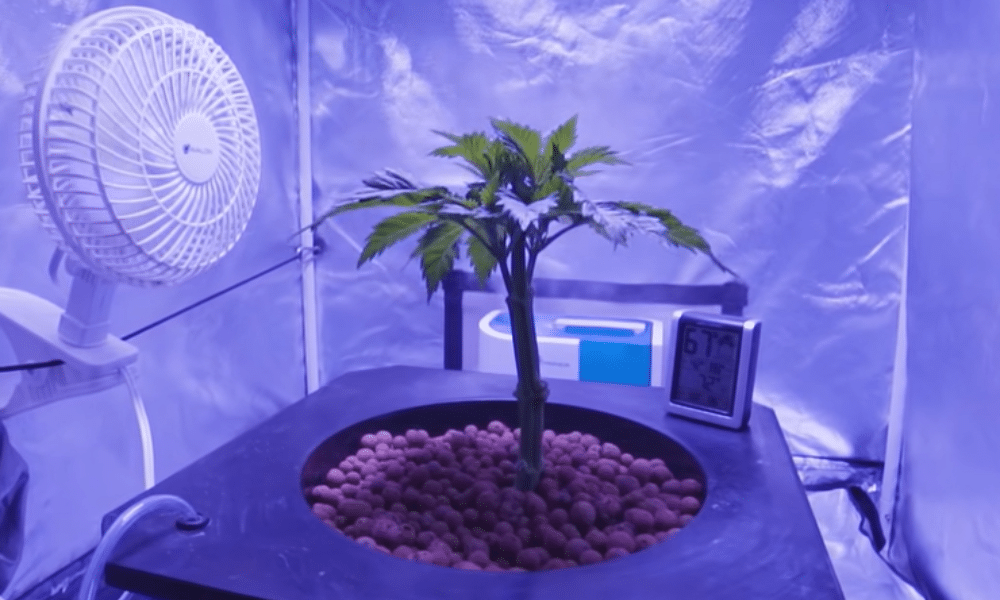
TOPPING VS. DEFOLIATION
Topping is another plant training technique rarely advised for use on autoflowers. It is more stressful than defoliation.
When topping, you cut off both the main stem and branches to encourage branching.
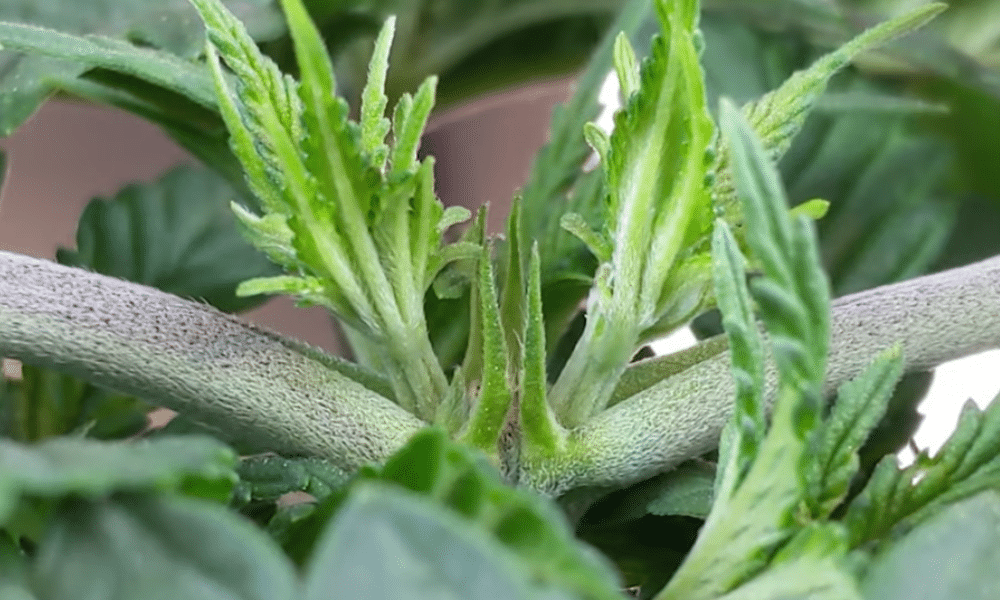
CONCLUSION
Defoliating autoflowers undoubtedly has its rewards but it is very tricky. Defoliating autoflowers requires strategic thinking, experience, and pristine care.
However, with the right guide to defoliating autoflowers, anyone can explore the process. And if you don’t feel up to defoliating autoflowers, there are tons of alternatives you can explore.
FAQ
Can I defoliate autos during flowering?
You should not defoliate autos during flowering to avoid wasting valuable growth time and risking low yields.
How many times should I defoliate autoflowering cannabis?
Because autoflowering cannabis has a short vegetative cycle, do not defoliate them more than twice, once at the vegetative stage and then waiting for your plant to recover. Or, remove one or three fan leaves every 4 to 5 days.
May defoliation force the plant to turn hermie?
Defoliation can stress cannabis, potentially increasing the risk of it turning hermaphroditic, especially if done excessively or during flowering.
Can I defoliate autoflowers during flushing?
Do not defoliate autoflowers during flushing. Defoliating autoflowers is best done at the late vegetative or pre-flowering stage. Flushing is usually done 2 weeks before harvest, the late flowering stage.
Can defoliated leaves be clones?
Yes, a healthy defoliated leaf can be used for propagating autoflower clones.


